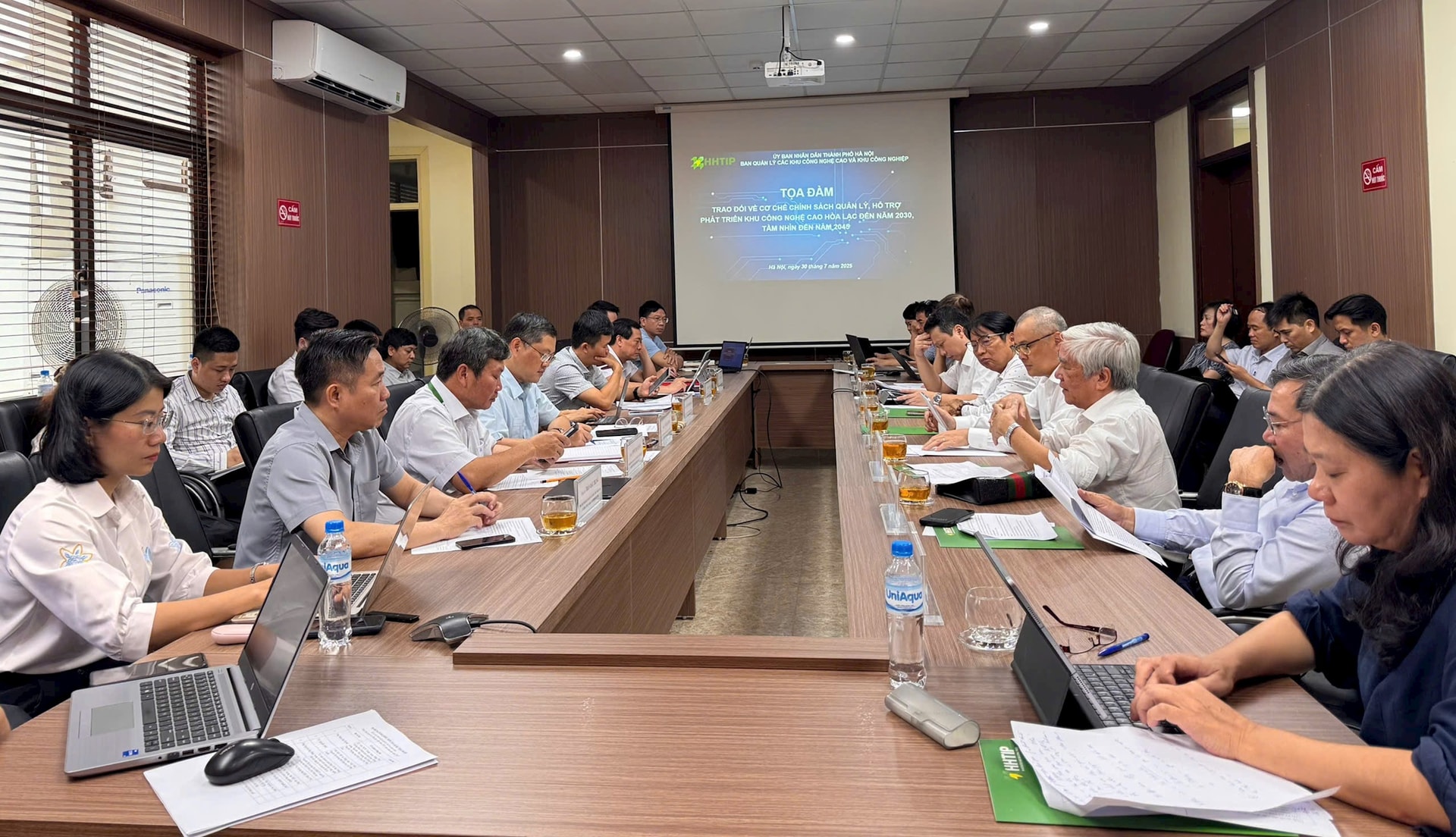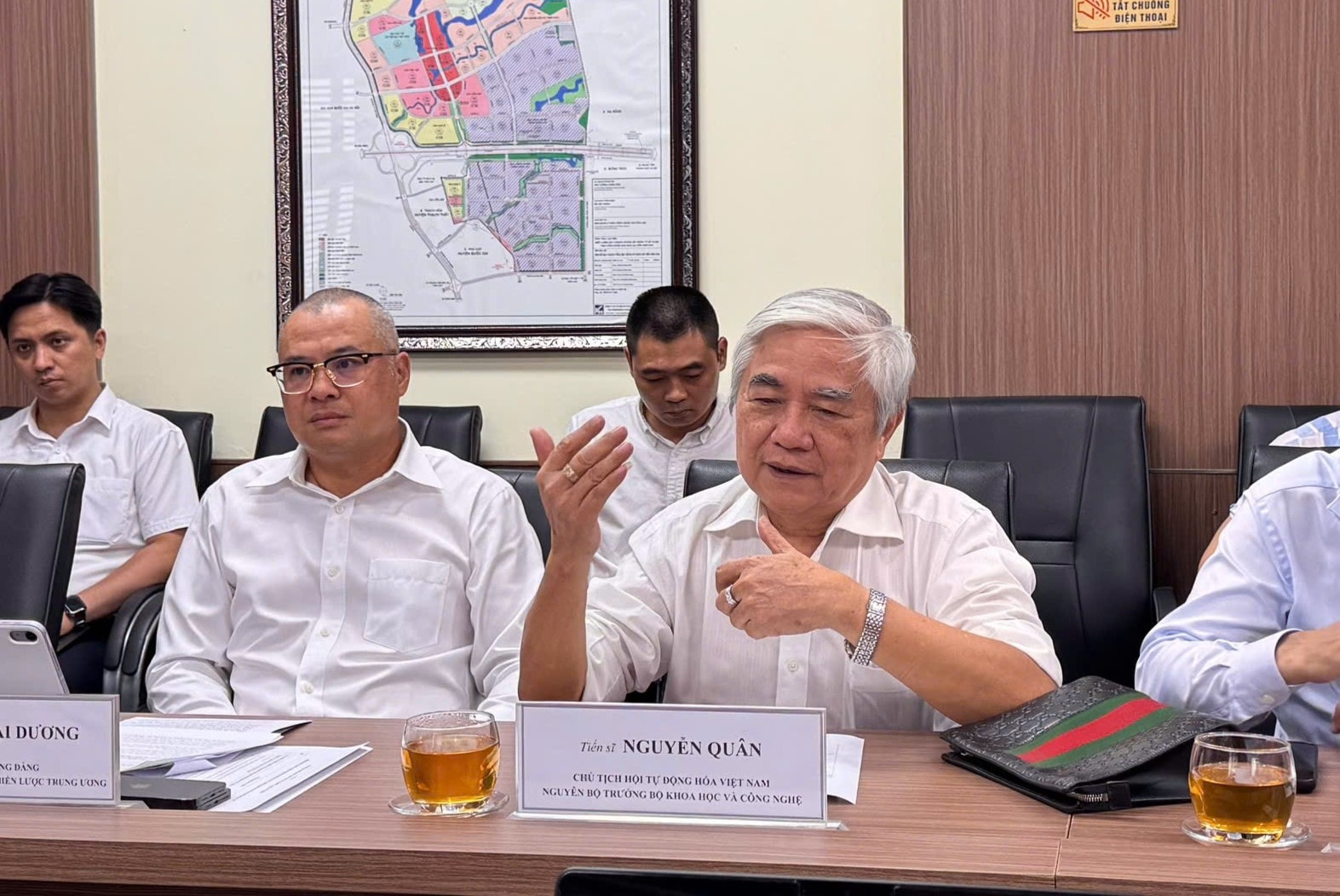At the seminar, Vu Xuan Hung, Head of the Hanoi Management Board for High-Tech Parks and Industrial Zones, stated that after more than 25 years of development, Hoa Lac High-Tech Park has attracted 110 investment projects with a total registered capital of about US$5 billion.

Overview of the conference.
The park has gradually formed a cluster of research, training, and high-tech production. However, challenges remain, including institutional constraints, insufficient social infrastructure, lack of highly qualified personnel, and the absence of a comprehensive innovation ecosystem.
Experts and policymakers at the seminar discussed development directions, organizational models, key tasks, and breakthrough policies to enhance the role of Hoa Lac High-Tech Park in the current context.
Dr. Nguyen Quan, Chairman of the Vietnam Automation Association and former Minister of Science and Technology, emphasized that the core of Hoa Lac must be its research and development (R&D) zone. This zone should serve as the nucleus of innovation and a magnet for high-tech investment.
He proposed several key solutions, including allowing housing and service facilities within the park to create a comprehensive living and working environment for experts, scientists, and skilled workers.
He also recommended the establishment of a venture capital fund to commercialize research outcomes and support startups. He called for a revision of the park's master plan to integrate research, production, service, and creative urban spaces.

Dr. Nguyen Quan, Chairman of the Vietnam Automation Association and former Minister of Science and Technology.
According to Dr. Quan, only when these conditions are met can Hoa Lac become Vietnam's "innovation valley," fulfilling the expectations of both the central government and the Hanoi administration.
Pham Dai Duong, Deputy Head of the Central Committee on Policy and Strategy, urged the Management Board to translate Resolution No. 57-NQ/TW of the Politburo and Plan No. 01-KH/BCDTW dated June 2, 2025, into actionable strategies.
These policies are aimed at breakthrough development in science, technology, innovation, and national digital transformation. He emphasized the importance of developing advanced technology and aligning Hoa Lac with the Capital Region's planning and the national science and technology strategy.
Duong suggested establishing a technology trading platform at Hoa Lac to accelerate the transfer of research outcomes, support product commercialization, and boost the technology market and innovative startups.
He also recommended that the Management Board propose special policies to the Hanoi People's Committee and coordinate with the Ministry of Science and Technology to attract high-tech investments.
Several delegates proposed strengthening the autonomy of the Management Board, building an integrated innovation-driven urban model, and prioritizing core technologies such as artificial intelligence, semiconductors, biotechnology, and new materials. Others stressed the need to revise the overall and functional zoning plans, step up investment promotion, and enhance Hoa Lac's public image.
According to the development plan, by 2030, Hoa Lac will complete its technical infrastructure and attract at least 500 high-tech enterprises. By 2035, the area will become a smart and green science-technology urban zone with over 100,000 workers. By 2045, Hoa Lac aims to become a leading innovation hub in Asia.
In conclusion, Hung from the Hoa Lac Hi-tech Park affirmed that the Management Board would fully incorporate all constructive feedback to finalize the development plan. The revised plan will be submitted to relevant authorities for approval, serving as a strategic foundation to establish Hoa Lac as a national innovation center in the decades ahead.